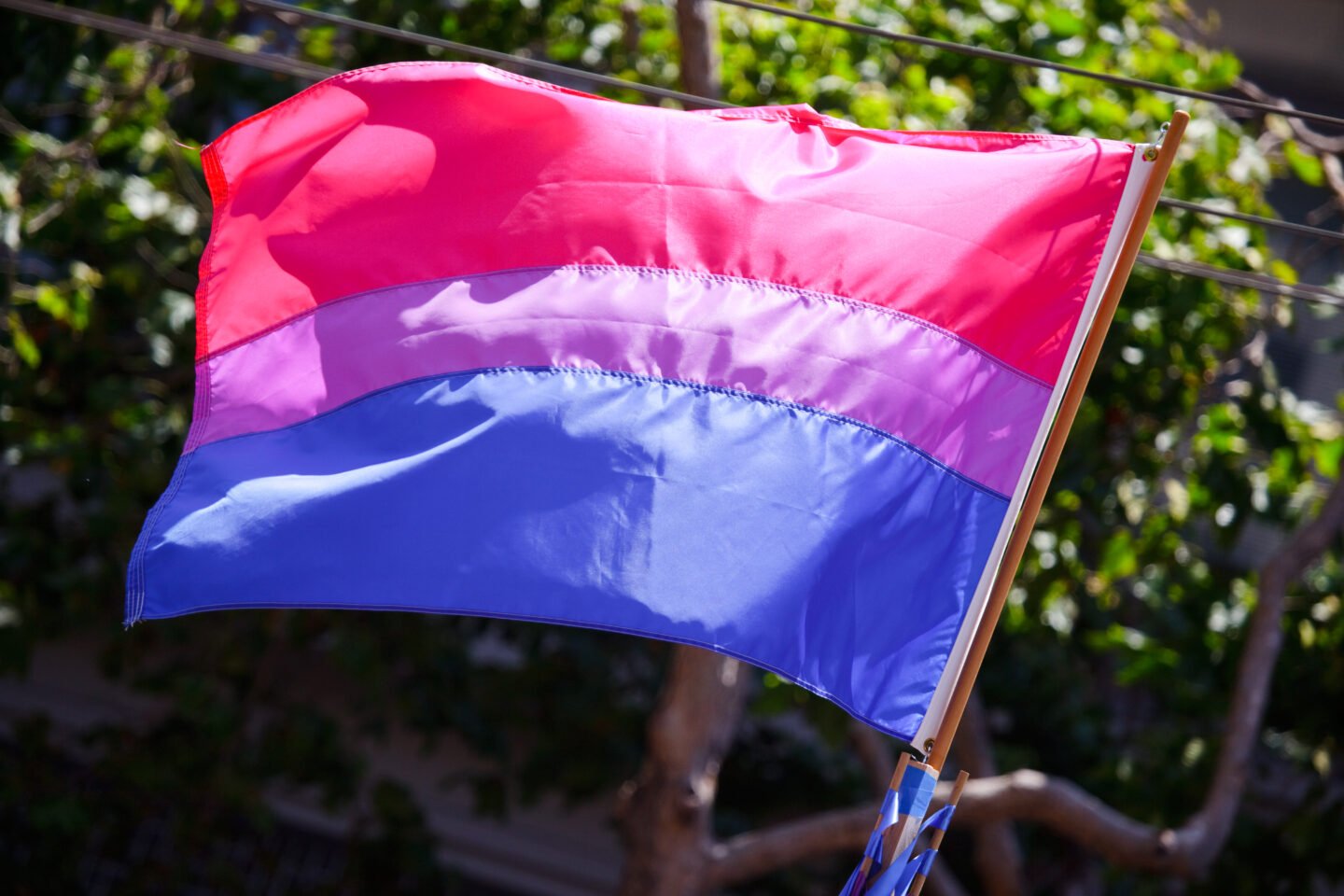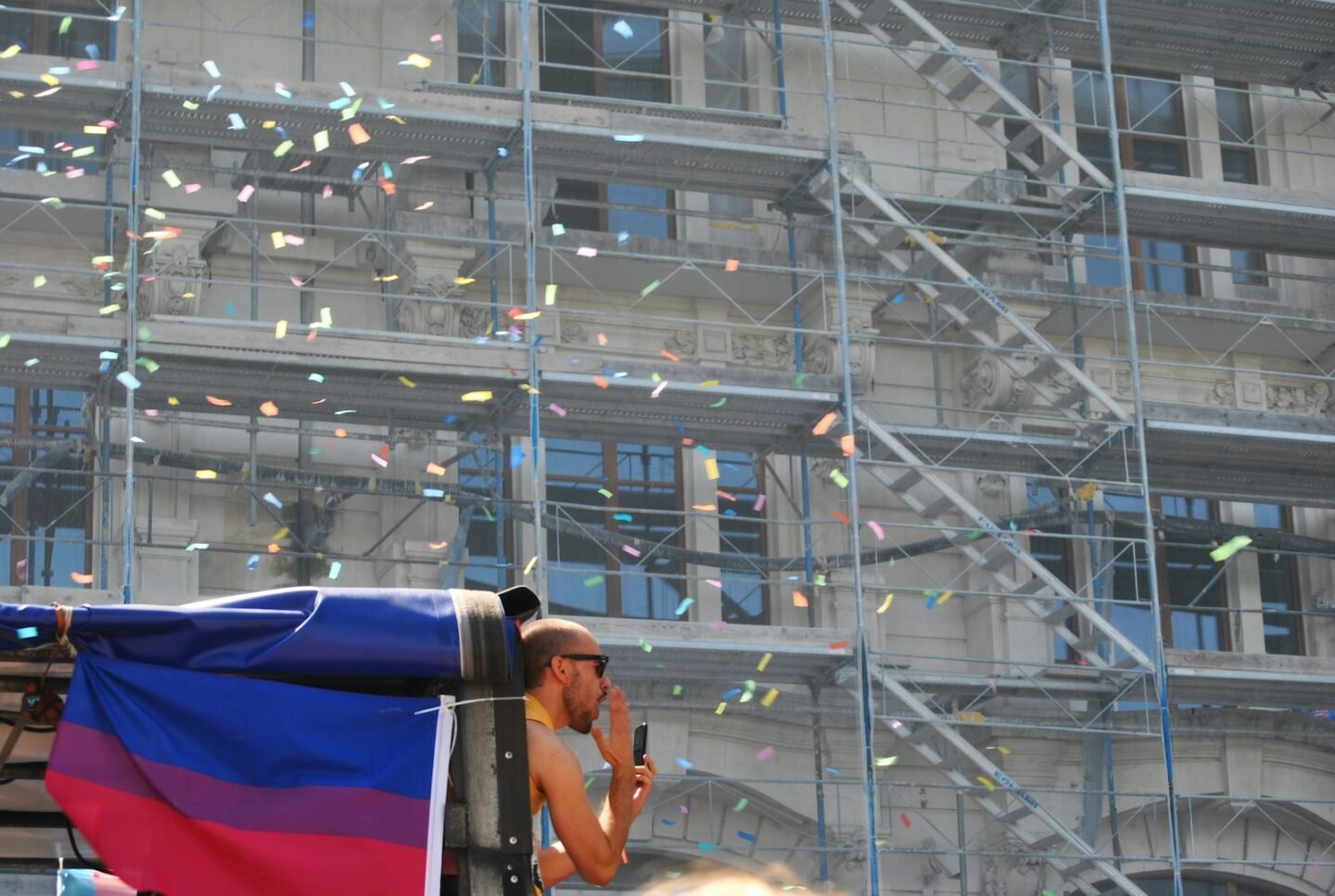The bisexual flag is a symbol of pride and solidarity for bisexual people. It is also a powerful reminder of the long history of biphobia and the resilience of the bisexual community.
The bisexual flag was first designed in 1998 by Michael Page, a bisexual activist. Page wanted to create a flag that would represent all bisexual people, regardless of their race, gender, or sexuality. He was inspired by the rainbow flag, which is a symbol of LGBTQ+ pride.

The bisexual flag has three stripes: pink, purple, and blue. The pink stripe represents same-sex attraction, the purple stripe represents attraction to both men and women, and the blue stripe represents opposite-sex attraction.
The bisexual flag was first flown publicly in 1999 at the Philadelphia Gay Pride Parade. It has since become a widely recognized symbol of bisexual pride and solidarity.
The bisexual flag is important to the bisexual community for several reasons. First, it is a visible symbol of bisexual identity. Bisexual people often face invisibility and erasure, so the bisexual flag is a way for bisexual people to assert their identities and be seen.
Second, the bisexual flag is a reminder of the long history of biphobia. Bisexual people have been marginalized and discriminated against for centuries. The bisexual flag is a way to honour the history of the bisexual community and to fight against biphobia today.
Third, the bisexual flag is a symbol of resilience and hope. Bisexual people have survived centuries of oppression and discrimination. The bisexual flag is a reminder of the strength and resilience of the bisexual community.
The Meaning of the Bisexual Flag Colours
Each of the three colours of the bisexual flag has a specific meaning:
- Pink: Pink represents same-sex attraction. It is also associated with femininity and love.
- Purple: Purple represents attraction to both men and women. It is also associated with diversity and inclusivity.
- Blue: Blue represents opposite-sex attraction. It is also associated with masculinity and strength.

The History of the Bisexual Flag
The bisexual flag was first designed in 1998 by Michael Page, a bisexual activist. Page wanted to create a flag that would represent all bisexual people, regardless of their race, gender, or sexuality. He was inspired by the rainbow flag, which is a symbol of LGBTQ+ pride.
The bisexual flag was first flown publicly in 1999 at the Philadelphia Gay Pride Parade. It has since become a widely recognized symbol of bisexual pride and solidarity.
Related article: Origins & Explanation Of The Lesbian Flag Colors & Meaning
The Importance of the Bisexual Flag to the Community
The bisexual flag is important to the bisexual community for several reasons. First, it is a visible symbol of bisexual identity. Bisexual people often face invisibility and erasure, so the bisexual flag is a way for bisexual people to assert their identities and be seen.
Second, the bisexual flag is a reminder of the long history of biphobia. Bisexual people have been marginalized and discriminated against for centuries. The bisexual flag is a way to honour the history of the bisexual community and to fight against biphobia today.
Third, the bisexual flag is a symbol of resilience and hope. Bisexual people have survived centuries of oppression and discrimination. The bisexual flag is a reminder of the strength and resilience of the bisexual community.
Bisexuality and Biphobia
Bisexuality is the attraction to both men and women. Bisexual people can be any gender, race, or ethnicity.
Biphobia is the discrimination or prejudice against bisexual people. Biphobia can take many forms, such as:
- Invisibility: Bisexual people are often made invisible or erased. For example, bisexual people may be assumed to be gay or lesbian, or they may be excluded from LGBTQ+ spaces.
- Stereotyping: Bisexual people are often stereotyped. For example, bisexual people may be stereotyped as promiscuous, cheaters, or confused.
- Discrimination: Bisexual people may face discrimination in all areas of their lives, including employment, housing, and healthcare.
How to Support the Bisexual Community
There are many ways to support the bisexual community. Here are a few ideas:
- Educate yourself about bisexuality and biphobia. The more people who know about bisexuality and biphobia, the better. You can learn more by reading books and articles, watching documentaries, and talking to bisexual people.
- Speak out against biphobia. If you see or hear biphobia, speak out against it. This can help to create a more inclusive and accepting environment for bisexual people.
- Support bisexual-owned businesses and organizations. There are many bisexual-owned businesses and organizations that do important work for the bisexual community. You can support them by buying their products or services, or by donating to them.
- Be an ally to the bisexual community. This means standing up for bisexual people
If you need more information, then head over to our bisexual articles section of the website.
Much bi love,
Team Nonchalant x


